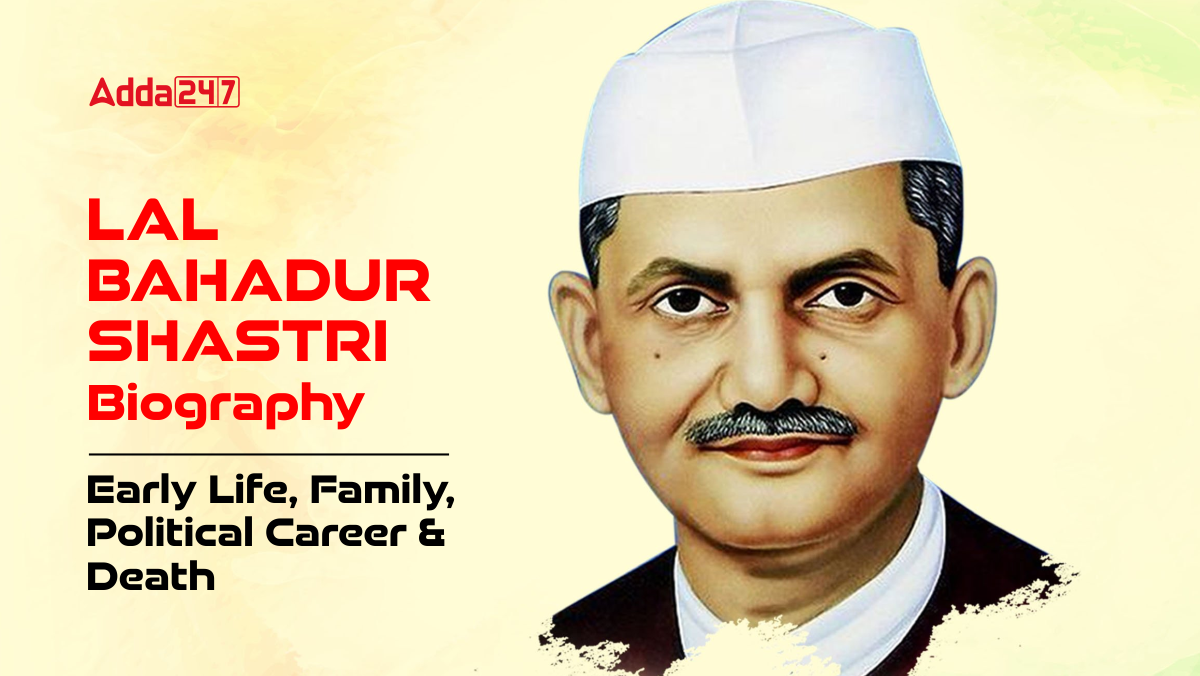Lal Bahadur Shastri, India’s second Prime Minister, embodied remarkable simplicity and an unswerving commitment to his nation’s welfare. Born on October 2, 1904, in Mughalsarai, Uttar Pradesh, Shastri’s life story is a testament to his unwavering dedication to India’s fight for independence and his ceaseless endeavors to enhance the well-being of its people. In the following paragraphs, we delve into the life and accomplishments of this iconic leader in Indian history.
Lal Bahadur Shastri: Early Life and Family
Lal Bahadur Shastri, born on October 2, 1904, in Mughalsarai, India, emerged from humble beginnings. Raised by his maternal grandfather after losing his father at a young age, he faced adversity early in life. Shastri’s dedication to education began at a railway college and continued at Harish Chandra High School in Varanasi.
Family and Social Engagement
In 1928, Shastri married Lalita Devi and together they had six children. The Shastri family’s commitment to social causes and India’s progress remained unwavering throughout their lives.
Independence Activism
Shastri’s journey into India’s independence movement was inspired by his teacher, Nishkameshwar Prasad Mishra and icons like Mahatma Gandhi, Swami Vivekananda and Annie Besant. He joined the Congress Party as a volunteer, actively participating in non-cooperation movements and picketing.
Education and Leadership of Lal Bahadur Shastri
Shastri’s pursuit of education led him to the Kashi Vidyapith, where he earned a degree in philosophy and ethics. His dedication earned him the title “Shastri” (Scholar), which became a part of his identity.
Involvement in India’s Freedom Struggle
Shastri’s entry into the Indian independence movement began at a young age when he joined Mahatma Gandhi’s non-cooperation movement in 1921. Despite facing arrests and opposition from family members, he remained steadfast in his commitment to the cause. He was incarcerated several times during his active participation in various freedom movements, including the Civil Disobedience Movement and Individual Satyagraha.
Political Career of Lal Bahadur Shastri
After India’s independence, Shastri’s political career blossomed. He served as the Minister of Police and Transport in Uttar Pradesh, introducing progressive reforms like employing female conductors and using water jets instead of lathis to disperse crowds.
Shastri’s journey with the Indian National Congress began in 1937, leading to his imprisonment for supporting individual Satyagraha. He played a pivotal role in the party’s electoral victories in 1952, 1957 and 1962.
Key Ministerial Roles
Shastri’s contributions extended to various ministerial positions, such as Railways, Commerce and Industry and Home Affairs. His vision led to the foundation of the Mangalore Port in 1964.
Prime Ministerial Tenure
In 1964, after the passing of Jawaharlal Nehru, Shastri assumed office as India’s second Prime Minister. His leadership was marked by several critical events:
- Official Language Controversary: Shastri defused the Madras anti-Hindi agitation by assuring that English would remain an official language as long as non-Hindi-speaking states
- Economic Policies: He continued Nehru’s socialist economic policies and initiated the White Revolution to boost milk production, founding the National Dairy Development Board.
- Foreign Relations: Shastri upheld India’s non-alignment policy while strengthening ties with the Soviet Union. He increased the defence budget after the Sino-Indian War and established relations with Egypt, Yugoslavia and other nations.
- Sirima-Shastri Pact: He signed an agreement with Sri Lankan Prime Minister Bandaranaike regarding the status of Indian Tamils in Sri Lanka.
Indo-Pak War and Tashkent Agreement
Shastri’s most significant challenge came in 1965 during the Indo-Pak War. Employing the slogan “Jai Jawan Jai Kisan,” he rallied soldiers and farmers like. The war ended with a United Nations-ordered ceasefire, leading to the Tashkent Agreement in 1966, where he met with Pakistani President Ayub Khan.
Lal Bahadur Shastri’s Passing
Tragically, Lal Bahadur Shastri passed away on January 11, 1966, from a third cardiac arrest while in office. His sudden death raised questions and conspiracy theories, but medical experts determined it to be due to heart failure. He was posthumously awarded the Bharat Ratna, India’s highest civilian honor.
Legacy
Lal Bahadur Shastri’s legacy endures as a symbol of integrity, humility and dedication to the nation. He maintained a simple lifestyle and was known as “The Man of Peace” for his commitment to nonviolent means is resolving conflicts. His contributions to India’s development and his leadership during challenging times continue to inspire generations.
Find More General Studies News Here




 Haryana Assembly Passes Resolution to Co...
Haryana Assembly Passes Resolution to Co...
 Which Country is Known as the Land of Ch...
Which Country is Known as the Land of Ch...
 Operation Hawkeye: US and Jordan Strike ...
Operation Hawkeye: US and Jordan Strike ...







